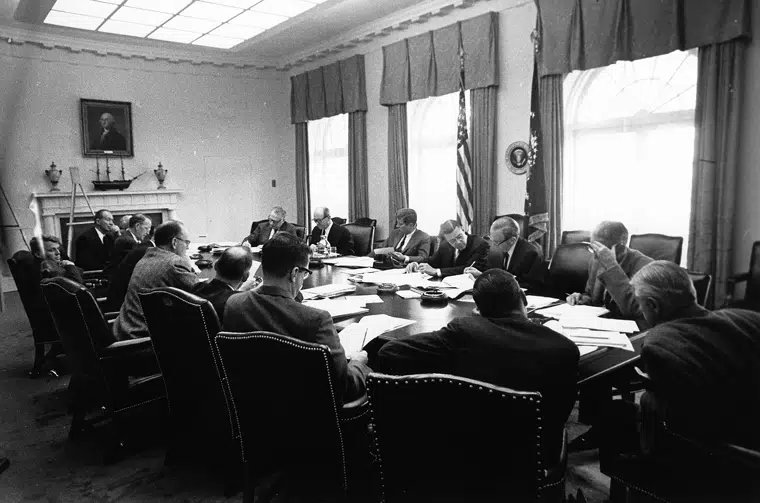
Russia’s invasion of Ukraine and its nuclear saber-rattling have roused the nuclear war genie, with the word “Armageddon” creeping into general discussion during the 60th anniversary of the Cuban Missile Crisis. That 35-day crisis (Oct. 16–Nov. 20, 1962) remains a definitive moment in United States national security history and was the general public’s first up-close-and-personal introduction to the real possibility of nuclear war. To those of us who witnessed this crisis, the days were long, nervous, and doomy. Many books have been published since the Cuban Missile Crisis. Thirteen Days by Robert F. Kennedy (1969), High Noon in the Cold War by Max Frankel (2004), and One Minute to Midnight by Michael Dobbs (2008) are among the most prominent. The crisis also has spawned numerous films, seminars, white papers, and panel discussions.
But the initial editorials of the Bulletin of the Atomic Scientists regarding the Cuban Missile Crisis, published from December 1962 to February 1963, provide a remarkable window into the immediate reaction to the real possibility of Doomsday:
All of these editorials provide historical perspective on the views of prominent and soon-to-be prominent nuclear minds of the early 1960s, as they grappled with the possibility of the end of civilization. However, one commentary is worth special attention.
Harrison Brown started writing his guest editorial “The Twentieth Year” on October 24, 1962, during the height of the Cuban Missile Crisis. The first paragraph of his editorial is profound and relevant; its message is as meaningful today as it was 60 years ago. The editorial begins:
OCTOBER 24, 1962: I am writing on a plane en route from Los Angeles to Washington and for all I know this editorial, honoring the twentieth anniversary of the first controlled release of nuclear energy by man, may never be published. This morning, the governments of the United States and Soviet Union were moving relentlessly toward armed conflict in the Caribbean. Missiles and planes stand poised on both sides, ready to deliver their deadly weapons to their targets. By tomorrow, if inflexibility persists or if someone in the Soviet Union or in Cuba or in our own government makes the wrong decision, the great all-out nuclear war, which we have discussed and feared for twenty years, may be triggered. Never in History have people and nations been so close to death and destruction on such a vast scale. Midnight is upon us.
Despite its age, Harrison Brown’s guest editorial continues to serve as a wake-up call. At the time it was published, the Doomsday Clock was set at seven minutes to midnight. In 2022, the Doomsday Clock sits at 100 seconds to midnight, where it has lingered since 2020. We must take Harrison Brown’s 1962 wake-up call seriously. Future generations should be allowed to read it again 60-years from now, in a world that has learned its lesson about nuclear weapons through diplomacy, awareness of the scope of the nuclear threat, and elimination, rather than the annihilation that seemed so palpable in 1962.
Link to article:
https://thebulletin.org/2022/10/deja-vu-and-nuclear-roulette-the-bulletins-initial-reactions-to-the-cuban-missile-crisis/
